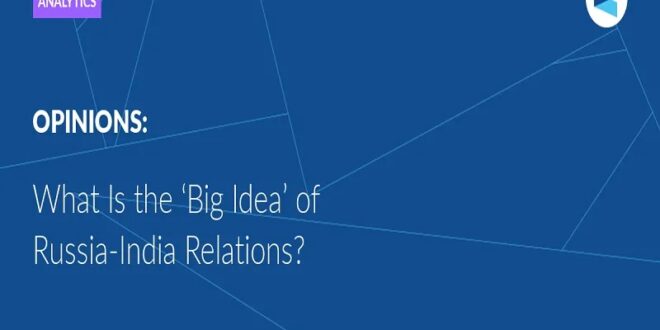The dialogue between their diplomats, experts, and policymakers in search of the next “big idea” for shaping the future of their strategic partnership would benefit by incorporating the precepts contained in the tri-multipolarity paradigm.
ThePrint published a detailed report on Monday about “Business deals, maritime corridors, govt securities — how India’s helping Russia use its surplus rupees”, which compiled all the mutually beneficial ways in which India proposed that Russia could invest its rupee stockpile. Foreign Minister Lavrov confirmed in early May that his country had accumulated an enormous amount of this currency owing to those two’s energy-driven explosion in bilateral trade since the start of the special operation.
This was foreseeable, which is why Russia reportedly requested late last year that India scale up its exports by a whopping five times in order to make the best use of these funds, particularly through the sale of more spare parts and certain raw materials. In practice, this could be greatly aided through India’s dual connectivity projects in Eurasia, the North-South Transport Corridor (NSTC) and the Vladivostok-Chennai Maritime Corridor (VCMC, later rebranded the Eastern Maritime Corridor or EMC).
About those two, “The North-South Transport Corridor Is Crucial To The Central Asian Republics’ Balancing Acts” while “India Is Indispensable To Putin’s Plans To Develop Russia’s Far Eastern Region”. Regarding the first megaproject, some of Russia’s rupee stockpile will reportedly be invested in having India build 24 river-sea cargo ships for expanding trade across the Caspian via the NSTC, while plans for the tapping more into the second opportunity have yet to manifest.
Even so, “Russia’s New Golden Visa Program Can Facilitate The Scaling Of Trade & Investment With India” if the latter’s world-renowned entrepreneurs take advantage of this to expand their business ties with the Russian Far East via the EMC. In the event that this is coupled with a similar NSTC-like shipbuilding agreement as the abovementioned reported one, then those two could make up for lost time by finally giving this megaproject the attention that it deserves.
During his speech at last month’s Belt & Road Initiative Forum in Beijing, “Putin Suggested That Chinese & Indian Investments In Russia Advance Shared Multipolar Goals”, namely their desire to accelerate the supercontinent’s integration. In fact, “Russia’s Sino-Indo Balancing Act Has An Increasingly Important Infrastructure Component” since relevant Indian investments serve to preemptively avert Russia’s potentially disproportionately dependence on China as its valve from Western sanctions pressure.
To that end, it’s of grand strategic importance for Russia to speed up the optimization of the NSTC and EMC, ergo why more of its rupee stockpile should be redirected towards such investments while also implementing other business-friendly policies in order to further appeal to more Indian companies. For as logical as the preceding insight is, Russian experts have yet to articulate this vision in spite of sensing that something of the sort is urgently required.
Valdai Club Programme Director and Dean of the School of International Relations at MGIMO University Andrey Sushentsov, who’s one of the country’s most respected experts, published a piece at his prestigious think tank last month asking “What Is the ‘Big Idea’ of Russia-India Relations?”. It was then republished by RT several days later under the title “Andrey Sushentsov: Here’s the main problem in Russia-India relations, and it might surprise you.”
This showed that not only is Russia’s expert community deliberating what must be done, but its publicly financed international media flagship thought it wise to amplify these efforts by republishing his piece with the implied intent of inspiring those two’s supporters to brainstorm solutions. Ideally, a new “big idea” for shaping the future of their strategic partnership will be agreed upon before December’s annual Russia-India Summit, the details of which are reportedly being discussed at a high level right now.
The dialogue between their diplomats, experts, and policymakers in pursuit of this goal ahead of that event would benefit by incorporating the insight shared in the following analysis from early March titled “Towards Tri-Multipolarity: The Golden Billion, The Sino-Russo Entente, & The Global South”. In brief, it postulates that the global systemic transition has reached the point of tri-multipolarity whereby the previously unipolar system has trifurcated into three “great poles”, within which lie several lesser poles.
These “great poles” are the US-led West’s Golden Billion, the Sino-Russo Entente, and the informally Indian-led Global South that Delhi began to guide after the inaugural Voice of Global South summit in January and all during its chairmanship of the G20 over the past year. The first one wants to retain its declining hegemony while the last two want to accelerate multipolar processes, though some among the first and third suspect that the second’s Chinese pillar secretly harbors hegemonic intentions of its own.
Russia doesn’t officially lend credence to that speculation, but its efforts to preemptively avert potentially disproportionate dependence on China via India as well as its recent “Ummah Pivot” towards majority-Muslim countries prove that it’s gently balancing the People’s Republic just in case. The worldview according to which these policies are being practiced has yet to be articulated by Russian experts as proven by Sushentsov’s piece, but it aligns with the proposed tri-multipolarity concept.
Therein lies the importance of this paradigm being incorporated into the ongoing dialogue between Russia and India’s diplomats, experts, and policymakers ahead of December’s annual summit since it functions as the sought-after “big idea” for shaping the future of their strategic partnership. If they agree to formulate policy based on this shared worldview, then they’ll be able to maximally reap the mutual benefits of their strategic partnership in parallel with unprecedentedly accelerating multipolar processes.
 Eurasia Press & News
Eurasia Press & News



